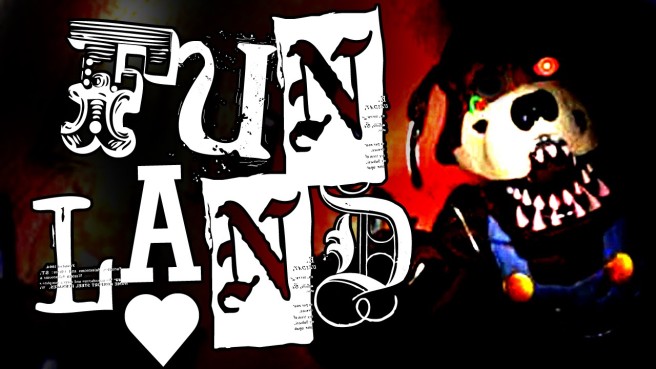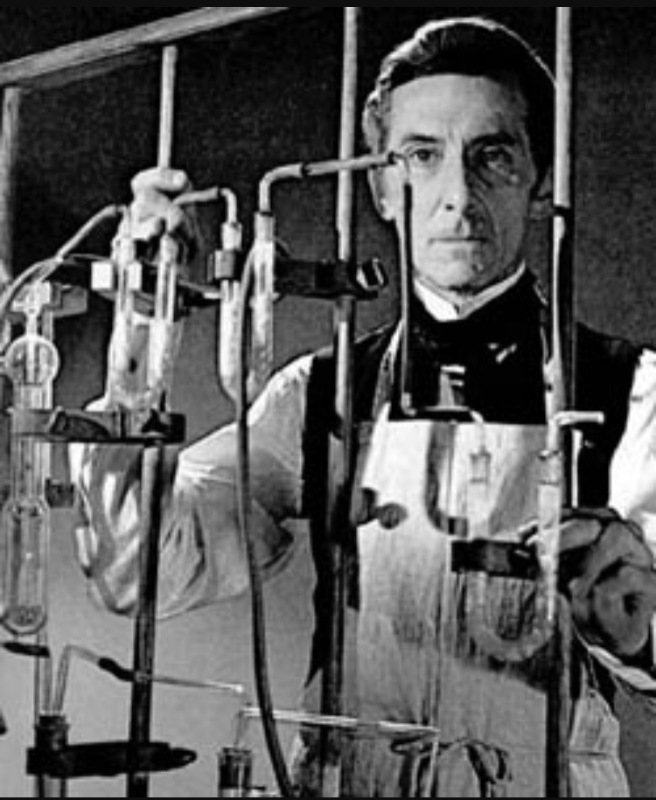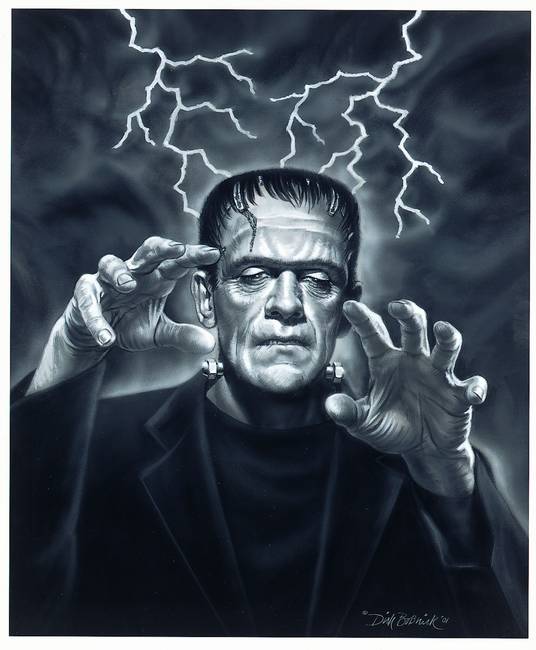Morgan is a modern day, Frankenstein based, science fiction film about a mysterious women sent to by a large corporation to assess the results of a project where a genetically engineered human has been created and desplayed violent behavior, starring Anya Taylor-Joy, one of the main actresses from 2015’s art-house horror film The Witch, and Kate Mara, who’s played supporting roles in American Horror Story: Murder House and House of Cards. Such a promising premise and cast begs the question of why the movie wasn’t better received. It was advertised in a very interesting way. The film was downloaded into an artificially intelligent computer named Watson, which analyzed all scenes and put together a trailer, making it the first A.I. to ever do so. Connecting the film to such a major discussion like whether or not a computer can create art worked well to get me interested.
However, the movie itself doesn’t even come close to being as revolutionary as its advertising strategy. It begins with the human lab creation, Morgan (Taylor-Joy), becoming violent toward her creators, and so the company in charge of the operation sends in an assessment specialist, Lee Weathers (Mara), to decide if the whole thing should be terminated or not. It soon becomes clear Morgan acts much more human than the researchers treat her, while Lee is shown to be very reserved and unsympathetic to her situation. The scienctists who created Morgan seem to go back and fourth between caring for her like a real person and just following procedure.
A psychologist (played by Paul Giamatti) is eventually brought in to evaluate Morgan’s mental state, and tension builds as he demands to sit across from her inside the cell. After many probing questions, her attack on a researcher at the beginning of the film is brought up. He starts yelling for her to react violently to him, and seems to go too far for it to just be a way of testing her submission with a bluff. She then kills him, which caught me off guard as I see no other way that could’ve ended with the guy continuously screaming at her to come at him.
It’s decided Morgan is too violent for the experiment to continue and should be terminated. The scene with her strapped to a table as she’s about to be euthanized is meant to be very emotional, but it doesn’t feel earned. One of the lead scientists, Dr. Lui Cheng (played by Michelle Yeoh), had Morgan convinced that she was her mother, but states she doesn’t have one right before the injection happens. After Morgan is revived by two handlers she was close to who plan to get her somewhere safe, she follows an old cliche by attacking people who secretly wanted to save her just as they’re about to do so. She finds Cheng, the two share a few words in another language, and Morgan suffocates her during a hug. This strongly hints they had a more personal relationship than Cheng’s coldness lead me to believe, but I still think it would’ve worked better to include some emotional moments between them before all the mayhem, instead of trying to make it a twist.
A larger problem this scene creates is that right before her death, Cheng recorded a video log saying their efforts to create a new more peaceful type of human have failed. If the whole point was to make someone peaceful, did forcing them to stay in a concrete cell for extended periods never seem like a bad idea? Did they ever think maybe treating her like a person, as opposed to a project or shifting between the two, would’ve produced a better result? With her entire upbringing supposedly centered around not being violent, why is it so easy for Morgan to go around beating the crap out of and/or killing people?
Morgan ends up locking Lee in her cell, and prepares to take her favorite handler to an unknown location, but looks kind of dumb when Lee brakes out of the room Morgan has longed to leave for months in less than an hour. The two start a game of cat and mouse where Lee survivors multiple blunders no regular human should, strongly hinting she really isn’t one. Morgan eventually gets to her destination, a lake, only wanting to see some more of the world she was shut away from.
Lee then sneaks up from behind and tosses her in the water, causing Morgan to flail around in it before Lee walks over and drowns her. At this point, I’m less sad about her death, and more confused how she can do marital arts and drive well enough to evade another car chasing her, but is helpless in waist deep water.
Lee proceeds to kill all remaining witnesses, and we’re suddenly in a city where two cliche looking businessmen are talking about how the recently failed experiment shows trying to improve their superhuman creations is pointless, costly, and they should “just stick to what they know” by continuing with the older model. The scene then cuts to Lee sitting in a cafe and staring into the camera, silently confirming she was also the product of genetic engineering.
This film certainly has flaws, the biggest being it’s reliance on sci-fi tropes, like the lab creation rebeling against its creator storyline, a shady corporation of nameless money hungry people in dark businesses meetings being behind it all, and just taking itself too seriously, though I can’t say I didn’t enjoy it a bit. It is well shot and manages to make something as normal as the woods feel like an alien environment, since that’s what it is for Morgan. Taylor-Joy’s performance was strange, but in a good way. The character is supposed to be similar to all the others, though in a large but not very visible, way different. Her asexual clothing and almost too proper way of speaking do a good job of convaying that strangeness. I was a little worried at first that Mara would give a stilted, awkward performance, but quickly saw the character isn’t meant to show that much emotion and has some trouble interacting with those who do, which was interesting.
In the end, this probably won’t go down in anyone’s Sci-Fi favorites list, but I wouldn’t mind seeing it again.
 “Funland” is a short horror story by Daron Silvers, and one that I really liked when first hearing it. The main character describing his love of arcades and animatronics as a kid reminds me of my own early years, so I can relate to his nostalgia when going to them after so many years. The writer also creates a very vivid picture of the abandoned park they’re visiting by describing the scene in both its heyday and forgotten state. This really gives it a feeling of innocence corrupted since it’s a place the character remembers so fondly from his childhood, but has been reduced to faded ruins that shouldn’t be reentered. I especially like how much detail is used for the character’s favorite animatronic, a humanoid dog part of a mini golf course that would come out of an outhouse and shout at players after getting a hole-in-one. It’s never described as creepy in the main character’s memory and sounds like something you would actually see in a children’s park. It also makes it a much bigger contrast when the character gets another hole-in-one at the abandoned attraction and the animatronic comes out of the outhouse after him.
“Funland” is a short horror story by Daron Silvers, and one that I really liked when first hearing it. The main character describing his love of arcades and animatronics as a kid reminds me of my own early years, so I can relate to his nostalgia when going to them after so many years. The writer also creates a very vivid picture of the abandoned park they’re visiting by describing the scene in both its heyday and forgotten state. This really gives it a feeling of innocence corrupted since it’s a place the character remembers so fondly from his childhood, but has been reduced to faded ruins that shouldn’t be reentered. I especially like how much detail is used for the character’s favorite animatronic, a humanoid dog part of a mini golf course that would come out of an outhouse and shout at players after getting a hole-in-one. It’s never described as creepy in the main character’s memory and sounds like something you would actually see in a children’s park. It also makes it a much bigger contrast when the character gets another hole-in-one at the abandoned attraction and the animatronic comes out of the outhouse after him.
 Now that Frankenstein has started narrating his own story, his character isn’t what I was expecting. All I really had to go on before this were TV references to the re-animation scene in the movie, where he just looked like a mad scientist, but knew there’d probably be more complexities to him in the book. He does seem a lot nicer though. Even after being plucked out of a certain death situation and still obsessed enough to continue into the cold climate, he’s a very polite guest on the ship, and finally gives the captain to someone to talk to.
Now that Frankenstein has started narrating his own story, his character isn’t what I was expecting. All I really had to go on before this were TV references to the re-animation scene in the movie, where he just looked like a mad scientist, but knew there’d probably be more complexities to him in the book. He does seem a lot nicer though. Even after being plucked out of a certain death situation and still obsessed enough to continue into the cold climate, he’s a very polite guest on the ship, and finally gives the captain to someone to talk to. My English literature class recently started reading Frankenstein, and I’ve got some mixed feelings about. I really like horror stories and this is the first one I’ll be reading as a class assignment, which is really good since I’ve been meaning to reading it at someone point and now have no excuse not to, but have trouble adgusting to older English in which it’s written. The same problem happened with Wuthering Heights, but it’s kind of like a water balloon fight. The writing is difficult to understand at first, but after a while you get used to it and it’s a great read, like how the initial coldness of the water might make you recoil but you eventually start having fun.
My English literature class recently started reading Frankenstein, and I’ve got some mixed feelings about. I really like horror stories and this is the first one I’ll be reading as a class assignment, which is really good since I’ve been meaning to reading it at someone point and now have no excuse not to, but have trouble adgusting to older English in which it’s written. The same problem happened with Wuthering Heights, but it’s kind of like a water balloon fight. The writing is difficult to understand at first, but after a while you get used to it and it’s a great read, like how the initial coldness of the water might make you recoil but you eventually start having fun.